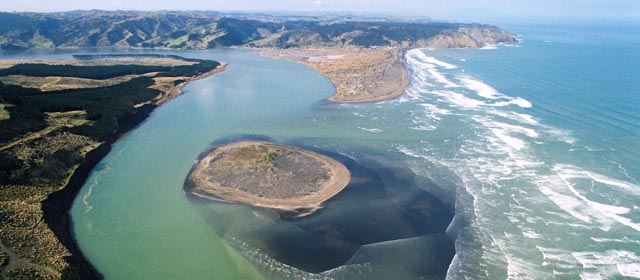Story summary
Waikato
The large Waikato group of tribes are descended from the people of the Tainui canoe, and take their name from the Waikato River, New Zealand’s longest. Their region stretches north from the Mōkau River in Taranaki to the Tāmaki isthmus where Auckland city now stands. Kāwhia, on the west coast, has special importance because it was the final resting place of the Tainui, and the first homeland of the Waikato peoples.
Ancestors
When her husband died, the ancestor Kahu made a famous journey from Kāwhia to Hauraki. Along the way she named landmarks such as the mountain Pirongia (Te Pirongia o Te Aroaro ō Kahu – the scented pathway of Kahu). Two other important ancestors are Tūheitia and his son Māhanga, who were both great warriors. Māhanga gave his name to a Waikato tribe, Ngāti Māhanga.
The King movement
As more British settlers arrived in the 1850s, Māori people around New Zealand decided to choose their own king, to show their unity and control of the land. The King movement became linked with the Waikato people because the first king chosen was the Waikato chief Pōtatau Te Wherowhero. His descendants have continued to take on the role of king or queen. Since 2006 the king has been Tūheitia Paki, son of the late queen, Dame Te Atairangikaahu.
War in Waikato
At first the New Zealand government was suspicious of the King movement, and wanted the fertile Waikato land for the European settlers. In 1863 soldiers invaded the Waikato, and although the tribes fought fiercely, they could not stop the troops pushing south. The final battle was at Ōrākau, south of Te Awamutu, in 1864. Māori defenders made their last stand with the famous cry, ‘Ka whawhai tonu mātou, ake, ake, ake!’ (We shall fight on forever!). They were forced into exile in what became known as the King Country, and the government confiscated the Waikato lands.
Revival
In the 1920s and 1930s Te Puea Hērangi, the granddaughter of the second king, led the Waikato people in building the Tūrangawaewae marae at Ngāruawāhia. This is now the centre of the King movement.
The late queen and her brother, Sir Robert Mahuta, brought the Waikato raupatu (confiscation) claim to conclusion in 1995. The government gave the Waikato people compensation for past wrongs, and an apology. They have since set up a college and health services, and have many marae, businesses and other projects in the Waikato. In 2013 over 40,000 people were affiliated with the Waikato tribes. More than 13,000 lived in Auckland.





